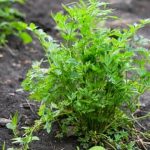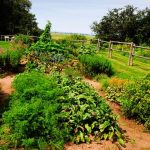Are you interested in starting your own vegetable garden in India but don’t know where to begin? Look no further. This article will provide you with all the essential information you need to get started with Indian vegetable gardening for beginners. Whether you have a small balcony or a spacious backyard, this guide will help you make the most of your space to grow your own fresh and organic produce.
In this comprehensive guide, we will cover everything from how to choose the right location for your garden, essential tools and supplies, selecting the best vegetables for the Indian climate, soil preparation and fertilization techniques, planting and watering tips, managing pests and diseases, harvesting and preserving your homegrown vegetables, as well as connecting with local gardening communities and resources in India.
Whether you are a novice or have some experience in gardening, this guide will provide invaluable information to help you kickstart your Indian vegetable gardening journey.
As the demand for fresh and organic produce continues to rise in India, more people are turning to home gardening as a way to have a sustainable source of healthy vegetables. With rising concerns about food safety and environmental impact, growing your own vegetables not only ensures that you have access to chemical-free produce but also contributes to a greener future.
So let’s roll up our sleeves and get ready to dig into the world of Indian vegetable gardening.
How to Choose the Right Location for Your Garden
When it comes to starting your Indian vegetable gardening journey, one of the most important decisions you’ll make is choosing the right location for your garden. The success of your vegetable garden largely depends on the amount of sunlight, water, and soil quality it receives. In India, the climate varies greatly from region to region, so it’s crucial to select a location that suits the specific needs of the vegetables you plan to grow.
The ideal location for an Indian vegetable garden is one that receives at least 6-8 hours of direct sunlight each day. This is especially important for sun-loving vegetables such as tomatoes, peppers, and eggplants. Additionally, the location should have good drainage to prevent waterlogging during monsoon season. If possible, choose a spot with access to a water source for easy irrigation.
Another factor to consider when choosing a location for your Indian vegetable garden is the proximity to your home. Selecting a spot that is convenient for regular maintenance and harvesting will make it easier for you to stay on top of tasks such as watering, weeding, and pest control. Consider creating raised beds or container gardens if space or soil quality is limited in your desired location.
As you embark on your journey into Indian vegetable gardening for beginners, it’s important to take the time to carefully select the right location for your garden. By considering factors such as sunlight exposure, water access, and proximity to your home, you can set yourself up for success and maximize the yield of your homegrown vegetables in India.
Connect with local gardening communities and resources in India can also provide valuable insights into selecting the best location based on regional climate and conditions specific to where you live.
Essential Tools and Supplies for Indian Vegetable Gardening
When starting an Indian vegetable gardening for beginners, it’s important to have the right tools and supplies to ensure a successful and fruitful garden. Here are some essential items you will need to get started:
1. Garden Spade and Fork: These tools are essential for digging, turning over soil, and breaking up clumps. Look for ones that are sturdy and comfortable to hold, as you will be using them frequently.
2. Hand Trowel: A hand trowel is useful for planting small seedlings and digging in tight spaces. It’s also handy for removing weeds.
3. Watering Can or Hose: A reliable watering can or hose is crucial for keeping your garden well-hydrated, especially during the hot Indian summers.
4. Gardening Gloves: Protect your hands from blisters, thorns, and splinters with a good pair of gardening gloves. Look for ones that are breathable and offer good grip.
5. Seeds or Seedlings: Of course, you’ll need the vegetables you want to grow. Whether you’re starting from seeds or seedlings, make sure to choose varieties that are well-suited to the Indian climate.
6. Organic Fertilizer: To maintain healthy soil and encourage strong plant growth, consider using organic fertilizers such as compost, manure, or natural plant-based fertilizers.
7. Plant Markers: Keep track of what you’ve planted by using plant markers or labels. This will help you remember which plants are which as they start to grow.
By having these essential tools and supplies on hand, you will be well-equipped to start your journey into Indian vegetable gardening for beginners and set yourself up for a successful harvest.
Selecting the Best Vegetables for the Indian Climate
When it comes to Indian vegetable gardening for beginners, one of the most crucial steps is selecting the right vegetables that are well-suited for the Indian climate. The diverse climate in India means that certain vegetables will thrive in specific regions while struggling in others. Understanding which vegetables to grow based on the climate is essential for a successful and bountiful harvest.
In northern parts of India, cooler temperature vegetables like cabbage, cauliflower, carrots, and radishes are ideal choices. These vegetables can withstand colder temperatures and are best planted during the winter months. In contrast, southern parts of India have a tropical climate, making it suitable for warm-weather vegetables such as tomatoes, eggplants, okra, and chili peppers. These vegetables thrive in hot and humid conditions.
It is also important to consider the monsoon season when selecting vegetables for an Indian garden. Certain crops like cucumbers, pumpkins, corn, and leafy greens do well during this time due to the increased humidity and rainfall. By carefully choosing the right vegetables based on the Indian climate, beginner gardeners can set themselves up for a successful harvest.
| Region | Ideal Vegetables |
|---|---|
| North India | Cabbage, cauliflower, carrots, radishes |
| South India | Tomatoes, eggplants, okra, chili peppers |
| Monsoon Season | Cucumbers, pumpkins, corn, leafy greens |
Understanding Soil Preparation and Fertilization Techniques
Soil preparation is crucial for successful Indian vegetable gardening for beginners. The first step is to test the pH level of your soil to ensure it is suitable for growing vegetables. Most vegetables thrive in slightly acidic soil with a pH range of 6.0 to 7.0. You can easily test the pH level of your soil using a DIY kit available at garden centers or by sending a sample to a professional lab.
Once you have determined the pH level, you can adjust the soil accordingly by adding organic matter such as compost, well-rotted cow manure, or vermicompost. These materials help improve the soil structure, increase its water retention capacity, and provide essential nutrients to your plants. In addition to organic matter, you may also need to add specific fertilizers based on the nutrient requirements of the vegetables you plan to grow.
It’s important to note that over-fertilizing can harm your plants and negatively impact the environment, so it’s recommended to follow the guidelines provided on fertilizer packaging or consult with local gardening experts for tailored advice based on your specific crop selection.
| Soil Preparation | Fertilization Techniques |
|---|---|
| Test the pH level of your soil | Add organic matter such as compost |
| Adjust soil by adding organic matter | Add specific fertilizers based on plant needs |
Tips for Planting and Watering Your Vegetable Garden
Planting your vegetable garden is an exciting step in your Indian vegetable gardening journey. However, it’s important to consider the right timing and spacing for your plants to ensure their successful growth.
Choosing the Right Planting Time
In India, the climate varies from region to region, so it’s crucial to understand the specific planting times for different vegetables. For example, heat-loving vegetables like tomatoes and peppers are best planted in the early summer months, while cool-season crops such as spinach and carrots thrive when planted in the fall or winter. Researching the ideal planting times for your chosen vegetables will help you make the most of your gardening efforts.
Optimizing Plant Spacing and Layout
Proper plant spacing is essential for healthy growth and efficient use of space in your garden. Overcrowding can lead to competition for nutrients and sunlight, resulting in stunted growth and decreased yields. Be sure to follow recommended spacing guidelines for each type of vegetable you’re growing. Additionally, considering a strategic layout that takes advantage of natural sunlight and airflow can further enhance the success of your garden.
Effective Watering Techniques
Watering is a critical aspect of Indian vegetable gardening, especially during the hot summer months. It’s important to provide consistent moisture without overwatering or underwatering your plants. One effective technique is to water deeply but infrequently, allowing the soil to dry out slightly between watering sessions. Utilizing mulch around plants can also help retain moisture and reduce water evaporation from the soil surface.
As you embark on planting and watering your vegetable garden, taking these tips into account will set you on the path to a bountiful harvest within your indian vegetable gardening for beginners experience.
Managing Common Pests and Diseases in Indian Vegetable Gardening
When it comes to Indian vegetable gardening for beginners, one of the most important aspects to consider is managing common pests and diseases. In a country like India with diverse climatic conditions, it is crucial to be aware of the potential threats to your vegetable garden and how to effectively deal with them. Below are some tips for managing common pests and diseases in Indian vegetable gardening:
- Identify the common pests and diseases: Familiarize yourself with the common pests and diseases that can affect vegetables in the Indian climate. This may include aphids, caterpillars, powdery mildew, and blight, among others.
- Implement preventative measures: Take proactive steps to prevent pest infestations and disease outbreaks in your vegetable garden. This may involve rotating crops, practicing good sanitation, and using resistant varieties when possible.
- Utilize natural remedies: Embrace organic solutions such as neem oil, garlic spray, and companion planting to manage pests and diseases without relying on harmful chemicals.
Understanding how to effectively manage common pests and diseases is essential for the success of your Indian vegetable garden. By taking a proactive approach and implementing organic solutions, you can minimize the impact of these potential threats on your homegrown vegetables.
Harvesting and Preserving Your Homegrown Vegetables
Once your vegetables have reached maturity, it’s important to harvest them at the right time to ensure the best flavor and quality. Different vegetables have different indicators of when they are ready to be picked. For example, tomatoes should be harvested when they are fully colored and slightly soft to the touch, while leafy greens can be picked when they reach the desired size.
It’s important to use the right tools for harvesting to avoid damaging your plants. A sharp pair of gardening scissors or shears is essential for cutting leafy greens and herbs, while a garden knife or pruners may be needed for more sturdy vegetables like squash or eggplant. Be gentle when harvesting to prevent any unnecessary damage to the plant.
Once you have harvested your homegrown vegetables, it’s important to know how to properly store and preserve them for future use. Many Indian households practice traditional methods of food preservation such as pickling, sun-drying, and making chutneys and sauces from their homegrown produce.
For beginners in Indian vegetable gardening, learning these preservation techniques can help extend the shelf life of your harvest and reduce food waste. Additionally, investing in proper storage containers such as airtight jars or containers with moisture-control features can help keep your vegetables fresh for longer periods of time.
In India, there are many local resources and communities that can provide valuable knowledge and support for beginners in vegetable gardening. Joining local gardening clubs or online forums can provide you with access to experienced gardeners who can share tips specific to growing vegetables in various regions of India. Additionally, visiting local seed banks or agricultural extension offices can provide you with information on suitable vegetable varieties for your specific climate and soil conditions.
Connecting With Local Gardening Communities and Resources in India
In conclusion, Indian vegetable gardening for beginners is a rewarding and fulfilling activity that allows individuals to grow their own fresh produce in the comfort of their own homes. By following the tips and guidelines outlined in this article, novice gardeners can learn how to select the right vegetables for the Indian climate, prepare their soil effectively, and manage common pests and diseases.
Additionally, connecting with local gardening communities and resources in India can provide valuable support and knowledge for those just starting out on their gardening journey.
When it comes to Indian vegetable gardening for beginners, choosing the right location is crucial for ensuring a successful harvest. By considering factors such as sunlight, water access, and wind protection, gardeners can create an optimal environment for their plants to thrive. Equipping oneself with essential tools and supplies will also make the gardening process more efficient and enjoyable. From hand trowels to watering cans, having the right equipment on hand is essential when tending to a vegetable garden.
Understanding soil preparation and fertilization techniques specific to the Indian climate is key for promoting healthy plant growth. By testing soil pH levels and incorporating organic matter into the soil, novice gardeners can create a nutritious foundation for their crops to flourish. Proper planting and watering techniques are also important components of successful vegetable gardening in India.
By following these fundamental guidelines, beginners can set themselves up for a bountiful harvest of homegrown produce in no time. Overall indian vegetable gardening for beginneres requires dedication but offers many rewards that go beyond just fresh vegetables at your disposal.
Frequently Asked Questions
Which Vegetable Is Easy to Grow in India?
In India, one of the easiest vegetables to grow is okra, also known as ladyfinger or bhindi. It thrives in warm weather and is relatively low-maintenance, making it a popular choice for home gardens.
What Is the Easiest Vegetable Garden for Beginners?
The easiest vegetable garden for beginners usually includes varieties like tomatoes, lettuce, and radishes. These vegetables are generally low-maintenance and can be grown in containers or small garden spaces, making them ideal for those just starting out with gardening.
What Vegetables Are Easiest to Grow for Beginners?
For beginners, some of the easiest vegetables to grow include carrots, green beans, and zucchini. These vegetables have relatively simple care requirements and can adapt to a variety of growing conditions, making them suitable for novice gardeners.

If you’re looking to get into vegetable gardening, or are just looking for some tips on how to make your current garden better, then you’ve come to the right place! My name is Ethel and I have been gardening for years. In this blog, I’m going to share with you some of my best tips on how to create a successful vegetable garden.





